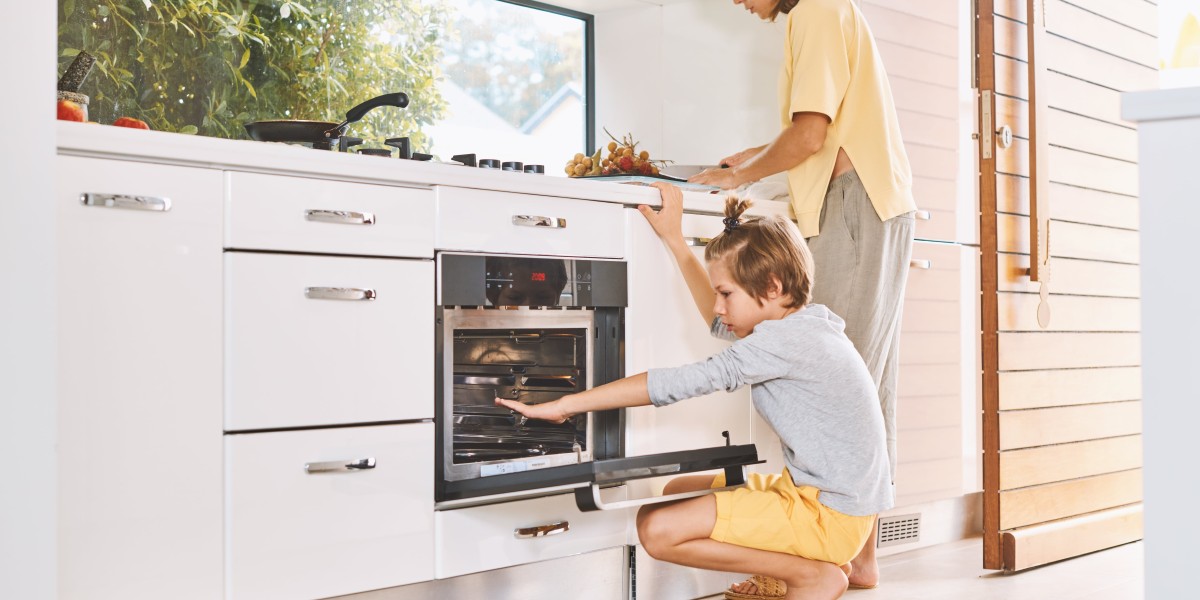
The Rise of Integrated Cookers and Hobs: A Comprehensive Guide
In the modern kitchen, efficiency, style, and area optimization are crucial considerations for homeowners and aiming chefs alike. One of the most considerable patterns in kitchen style is the increasing popularity of integrated cookers and hobs. These appliances not just enhance the cooking experience but likewise raise the looks of the kitchen space. This post explores the qualities, advantages, functions, and factors to consider surrounding Integrated Cooker And Hob [Gitea.Shundaonetwork.Com] cookers and hobs, supplying readers with an in-depth understanding of their benefits.

What Are Integrated Cookers and Hobs?
Integrated cookers and hobs describe cooking appliances that are built into the kitchen cabinetry, supplying a smooth look and maximizing making use of area. Integrated appliances are designed to blend with the aesthetic of the kitchen instead of standing out like standard models.
Types of Integrated Cookers and Hobs
Normally, integrated cooking appliances consist of:
- Integrated Hobs: These are cooktops that fit flush into the kitchen countertop. They can be gas, electric, induction, or a mix of these technologies.
- Integrated Ovens: Built directly into the kitchen cabinetry, integrated ovens can come as single, double, or multifunctional models, offering varied cooking capabilities.
- Combination Units: Some designs integrate an oven and hob into a single home appliance, using a compact solution for smaller kitchen areas.
Benefits of Integrated Cookers and Hobs
1. Space Optimization
Integrated cookers and hobs are ideal for little kitchen locations. By embedding the cooking appliances into kitchen cabinetry, property owners can use their kitchen area more effectively, leaving more room for meal preparation and motion.
2. Visual Appeal
These appliances supply a sleek and contemporary look to the kitchen. The ability to choose finishes and incorporate them into the surrounding cabinetry produces a unified style that boosts the overall look of the kitchen.
3. Enhanced Functionality
Integrated cookers and hobs frequently feature sophisticated innovation functions, such as wise controls, timers, and cooking presets, improving user experience and allowing effective cooking.
4. Boosted Safety
Many integrated hobs feature security procedures such as child locks and automated shut-off functions. This makes them much safer than conventional freestanding designs, particularly in households with children.
5. Increased Resale Value
Modern homes with integrated appliances frequently attract higher resale worths. Potential buyers try to find streamlined designs and modern conveniences, making integrated cooks and hobs a sensible financial investment.
Functions to Consider When Choosing Integrated Cookers and Hobs
When choosing integrated cookers and hobs, a number of functions need to be taken into account:
1. Cooking Technology
- Induction: Provides fast and effective cooking, simple to tidy, and gives exact temperature level control.
- Gas: Offers conventional cooking benefits with instantaneous heat however needs appropriate ventilation.
- Electric: Provides consistent heat and is available in numerous designs.
2. Size and Configuration
- Oven Capacity: Should be enough for the family's cooking requirements.
- Hob Size: Depending on the number of burners/vessels required for simultaneous cooking.
3. Control Mechanisms
- Touch Controls: Provide a smooth appearance and ease of cleaning.
- Knob Controls: Offer tactile feedback and are user-friendly.
4. End up and Style
Integrated cookers and hobs come in numerous surfaces, consisting of stainless-steel, black glass, and even adjustable choices to match cabinets.
5. Energy Efficiency
Choose energy-efficient designs that can save money on utility expenses and lower ecological impact.
Upkeep and Care
To keep the performance and longevity of integrated cookers and hobs, regular upkeep is key:
- Clean the surfaces: Regularly clean down the hob and oven surface areas to prevent residue accumulation.
- Check seals and gaskets: Ensure that oven seals are undamaged for effective cooking.
- Service frequently: Schedule professional upkeep to keep the appliances in top shape.
FAQs
1. What is the distinction in between built-in and integrated cookers?
Response: Built-in cookers are created to be installed within kitchen cabinets, whereas integrated cookers are produced to flawlessly blend with the cabinets for a more cohesive appearance.
2. Are integrated appliances more expensive?
Answer: Generally, integrated appliances might have a higher in advance cost compared to freestanding systems because of their design and the installation requirements. Nevertheless, they can provide long-term savings in energy performance.
3. Can I set up integrated cookers and hobs myself?
Answer: While some homeowners might have the ability to manage the installation themselves, employing a professional is recommended to ensure correct fit and function, particularly for gas appliances.
4. Are integrated cookers and hobs simpler to clean?
Response: Integrated hobs generally have fewer crevices, making them simpler to clean up. However, the particular cleaning requirements will depend upon the materials used in the appliance.
5. What should I inspect before acquiring?
Response: Check the size of your kitchen area, cooking needs, energy effectiveness rankings, and compatibility with existing cabinetry.
Integrated cookers and hobs are becoming progressively favored in contemporary cooking areas, integrating functionality with aesthetic appeal. By understanding their benefits, features, and maintenance needs, house owners can make educated choices when choosing the ideal appliances for their cooking areas. As patterns in kitchen style continue to evolve, integrated cooking solutions will likely stay at the forefront of home innovation, assuring both practicality and style.







